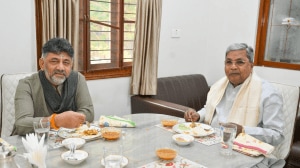Click here to follow Screen Digital on YouTube and stay updated with the latest from the world of cinema.
Prappeda is an audacious Malayalam sci-fi anti-war film
Krishnendu Kalesh’s debut feature film Prappeda, which premiered at Rotterdam, screened at IFFK, and won the special award for promising debut in direction at this year’s Kerala State Film Awards, leaves you with questions.
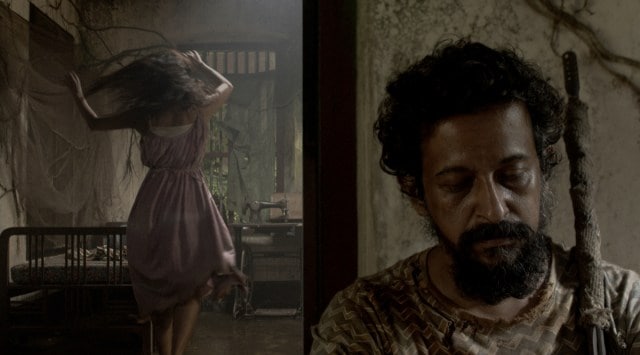 Imagine if the Kochi-Muziris Biennale was given a cinematic lease of life, Prappeda film is that.
Imagine if the Kochi-Muziris Biennale was given a cinematic lease of life, Prappeda film is that.The world seems to go by while a war carries on in Europe. Closer home, hardened identity politics is pitting human against human while some mainstream Hindi films are distorting history. Amid such contemporary history-writing, Krishnendu Kalesh’s Malayalam debut feature Prappeda (Hawk’s Muffin), critiquing patriarchy, greed, capitalism, and eco-fascism, is more a need than an exception.
Along with actor Nithin George (who arrived with Tovino Thomas-starrer Luca, 2019, and has turned into an indie regular, with films like Paka and Pada), Kalesh brings to his feature debut the drift of his black-and-white short film Karinchathan (Bete Noir, 2017) — his riposte to the 2015 Charlie Hebdo terrorist shooting — an impressive dark satire about two men on an assignment to kill the invincible Satan.
It’s difficult to bracket the well-curated Prappeda into a genre. Imagine if the Kochi-Muziris Biennale was given a cinematic lease of life, this film is that. Human and nature are in semblance, the greens, browns, and nude shades of the clothing is an extension of the moss and the tree roots on the walls, in the outdoors, and the beige skin tone matches the earth. It’s quite like Don Palathara’s Santhoshathinte Onnam Rahasyam/Joyful Mystery (Best Sync Sound at Kerala state awards last year), where the greens of the protagonists’ attire match the nature outside of their car, inside which the film unfolds.
 A still from Prappeda.
A still from Prappeda.
Shot in 18 days, with about 20 people, in an estate in Kottayam district, Prappeda was submitted to the NFDC work-in-progress lab in 2020. This year, it premiered at International Film Festival Rotterdam (IFFR) in the Bright Future category and at International Film Festival Kerala, and, last month, picked up the Special Award for Promising Debut in Direction at the 52nd Kerala State Film Awards. “As a film festival based in the Netherlands presenting Indian cinema, we need to be aware and very careful about issues like exoticism, hegemony, and power relations, but having said that, not everything is about cultural representation. India is so many different, contradictory things at once, far too complex to reduce it to a single cliché image. Like every year, like (PS Vinothraj’s IFFR Tiger Award winner) Pebbles/Koozhangal, the films in this year’s (IFFR) programme were not your typical festival movies,” says Germany-based Stefan Borsos, the programmer for South Asia at IFFR.
Prappeda begins with a hawk (military plane) punching out its “muffin” (a big pile of junk) that unleashes a “broccoli” (nuclear mushroom-cloud) in air, and razes life (think A-bombs from Hiroshima-Nagasaki). Chinook helicopters (recall Vietnam and Iraq wars) patrol the skies. The military pilot has been ordered to go into hiding. In a dystopian, post-apocalyptic future, in the heart of an Amazonian jungle in Kerala, is ensconced a world with its own rules, like Lijo Jose Pellissery’s Churuli, or a Tarkovskian “Zone”, where stands a house, belonging to the dead pilot’s progeny.
His grandson’s granddaughter Ruby (Ketaki Narayan), the youngest hire for the place and heir of the empire, her mute-paralysed mother (Neena Kurup), Xavier (Jayanarayan Thulasidas, also the film’s producer), an insomniac military renegade hired to guard the place/people, who’s an outcast to keep other outcasts/trespassers out. There is also a trickster priest who dilutes the water tank, poisons the mind, controls the beings (puts Xavier to temporary sleep), and in comes another man, allegedly the dead pilot’s descendant from another line.
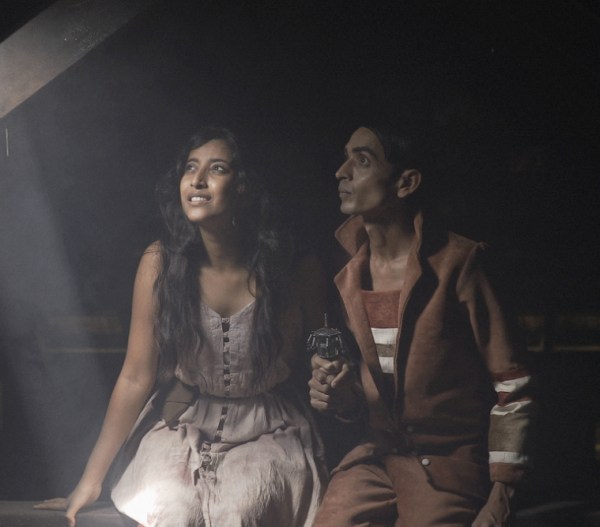 Ketaki Narayan and Rajesh Madhavan in Prappeda.
Ketaki Narayan and Rajesh Madhavan in Prappeda.
A graphic designer by training, Kalesh brings in his myriad interests to this gestalt — there’s art, busts/sculptures, still life coming to life, there’s theatre, dialogue-less acting and pantomime, advertisement collages, industrial sound (designed by Nithin Lukose, Paka director). Freshly imagined, the sci-fi fantasy drama is a technological marvel, the cinematography, and Thoufeek Hussain’s animation and VFX (composed of 650 shots) soar.
The film’s replete with intertextuality. Kalesh dutifully pays credit to four masters at the start, which sadly colours our viewing. There is also a worship symbol that looks like the faun from Pan’s Labyrinth (2006) but refers to the Swedish symbol from Midsommar (2019), and there are some obvious references to “elements from The Shape of Water (2017)”.
The setting is a Foucauldian heterotopia, where Ruby’s coming of age takes place in an attic. It’s her secluded space where she hides an alien being (Rajesh Madhavan), whom she met one day. Ruby, who’s been confused about her emotional and physical needs, grows fond of him; he gives her a toy that brings her an unknown joy. A symbol of both peace, perhaps, of an alternative faith, for it resembles a mini prayer wheel, signalling that she alone can effect change, and pleasure, for it vibrates, and sets Ruby’s static-until-now life, and life’s purpose, in motion.
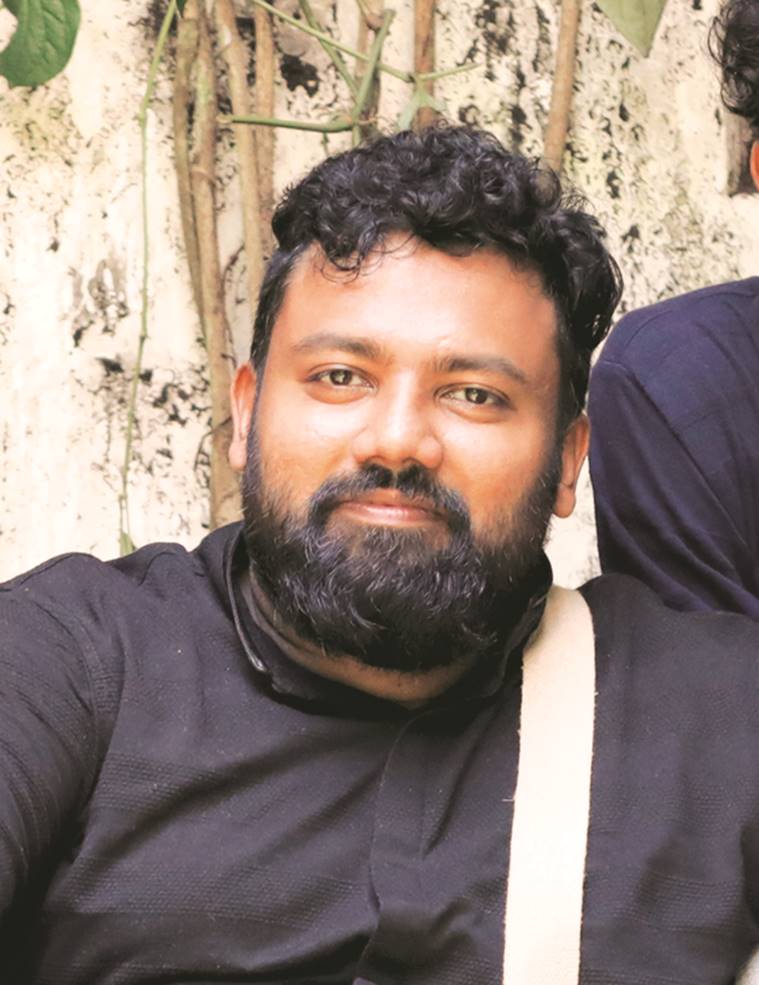 Prappeda is helmed by Krishnendu Kalesh.
Prappeda is helmed by Krishnendu Kalesh.
Here is a turtle (added to the film at the very end, on the edit table), an inauspicious creature that’s lived for 200-300 years and carries history, having seen the World War II; there are writer-revolutionary Vaikom Muhammad Basheer’s anti-war meditations. Kalesh points at how “wars are a never-ending, never-resolved human enterprise.” The pandemic has only expedited ethnocentrism, exclusionism, and expansionism. By the time the camera pulls off, the waterfall sound gives way to industrial sounds, excavations are happening somewhere.
Peace arrives at a personal cost, Ruby has to relinquish all that’s hers: her love, feelings, right/home/land, a disputed all-out masculine zone, where women are mute. Washed ashore, she’s a refugee and a prappeda/female pigeon who brokers peace in a faraway land, where, in a climactic fall, she delivers mid-air (suspended like a “Make Love, Not War” peace symbol from the Vietnam War) — a Tarkovskian transcendence — is she ringing in life and hope or future destruction?
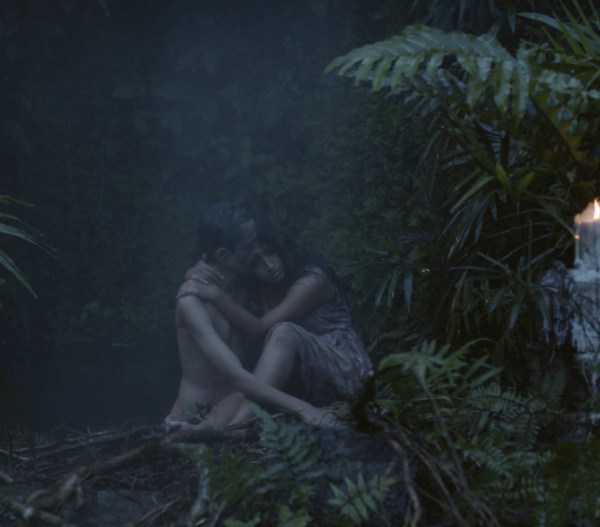 A still from Prappeda.
A still from Prappeda.
The film unveils itself in layers, which reveal themselves on multiple viewings, which a one-time theatre show may not afford, but OTTs do. Kalesh uses narrative to undo the narrative. In Prappeda, Kalesh pieces together too many threads, somewhere the particularities take precedence over the diegesis — it is abstract but temporally linear. It’s an “interesting film”, which, to quote Wong Kar-wai, is “something that you can have an aftertaste. Sometimes, when you look at the film, you might not get it the first time, but somehow it lingers.” Prappeda, a hybrid film, leaves you with questions.


- 01
- 02
- 03
- 04
- 05















